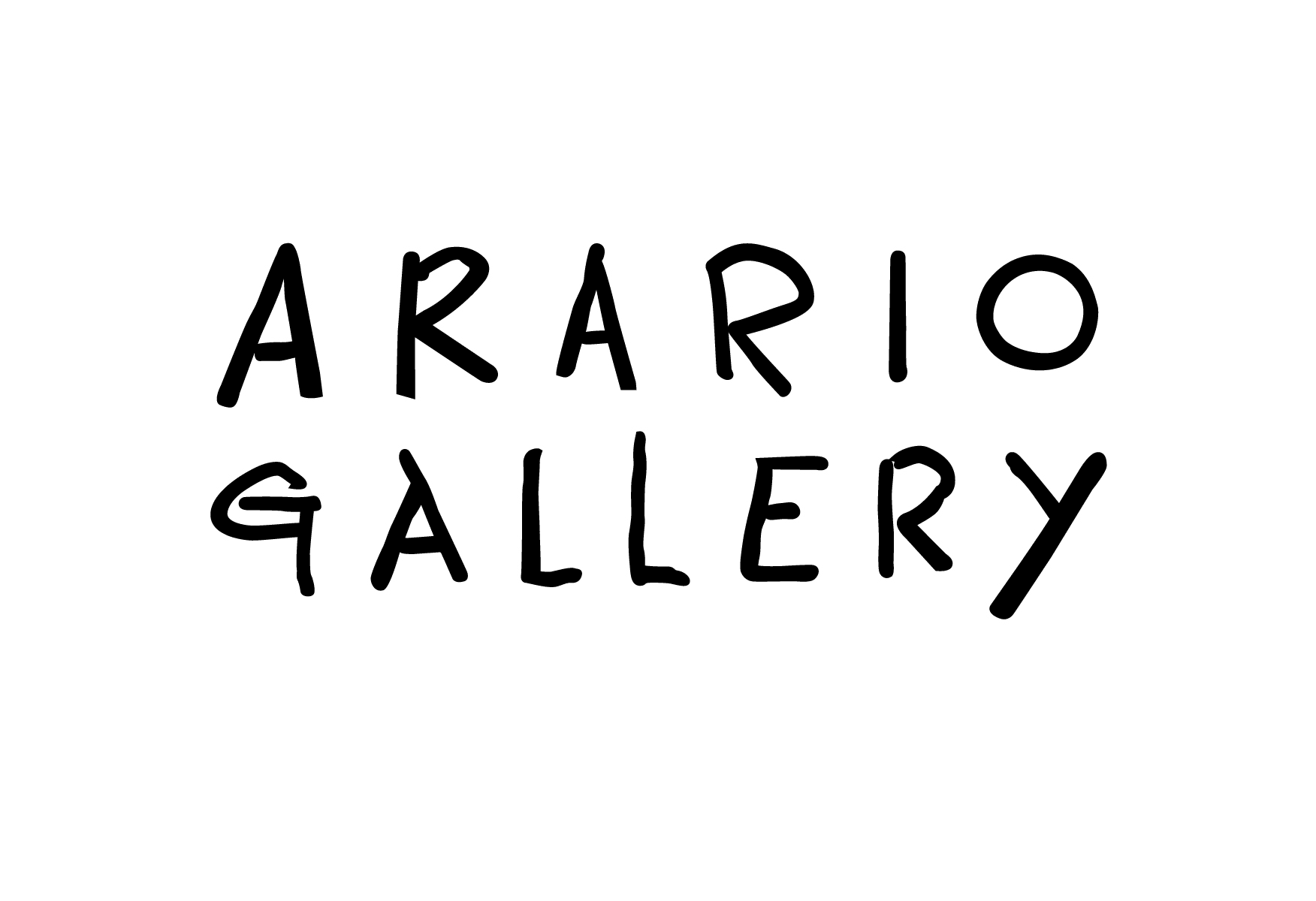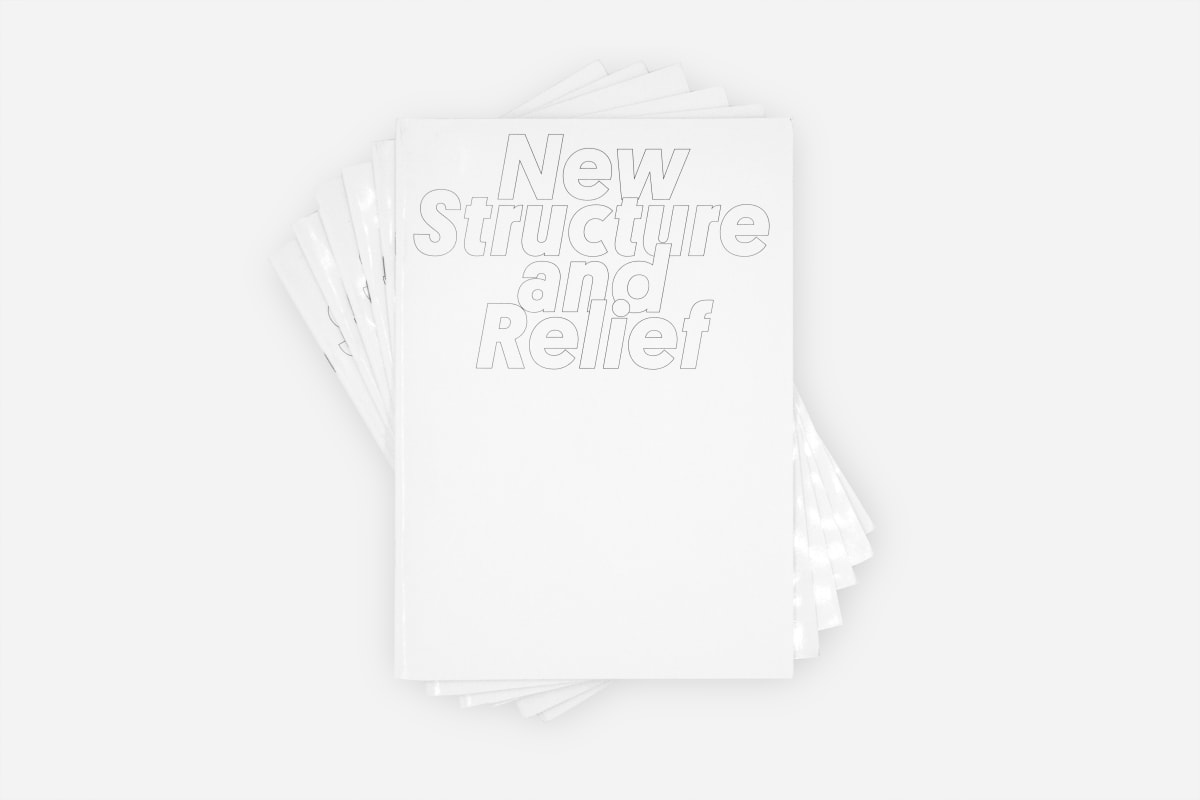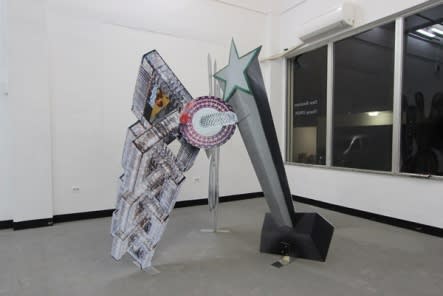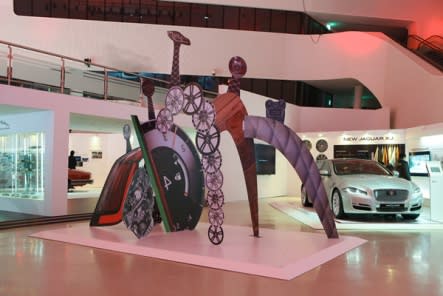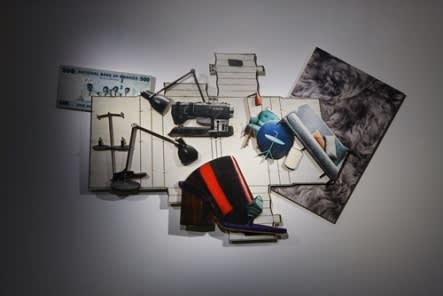GWON Osang: New Structure and Relief
There is something about the works of Osang Gwon that steals people’s glance against their will, like that of the song of Siren. As much as the temptation of Siren towards Odysseus, Gwon’s works dazzle the audience and entice them to take a step forward, but his tenacious introspection on sculptural language springing within his work is much fatal to bear with. People certainly ask themselves when they walk out of the gallery after aimlessly roaming around the works of Osang Gwon. It’s about the language and gesture of sculpture and about its ontology.
As it is commonly known, Osang Gwon is an artist who endlessly indulges in the new formative structure and attempts experimental fusion of media rather than expressing representational figurative sculpture based on modeling. For significant years, Gwon had discovered and polished the grains of new stratum of sculpture within the various media and images, and thus introduced number of series throughout diverse variation of structure. For example, in Deodorant Type series, Gwon takes photographs of the subject that becomes the beacon and suggests those photographs into the medium of sculpture, further discussing the expansion of sculpture while claiming to be a light sculpture. In The Flat series, he plainly exposed the innate flatness of the persistently collected images representing contemporary culture, composed them three-dimensionally and then he showed an irony of reversing that structure into flat surface again. These two are from the earlier series, yet they incessantly elicit new topic of discussions from flat and solid, fantasy and real, to the issue of indicator.
Afterwards, Gwon began to use celadon, the traditional material of sculpture to produce one of the ideals of sculpture, in other words he attempted to express the desire of reproducing an original form of the subject itself, but created the subject within the image or ideology beyond original. He presented this in The Sculpture series. For the Masspatterns series, he constructed formative aesthetics through the sculptural gesture of mixing and cumulating photographs with index and collected images, figures and animals, and daily objects without any boundary or reason. Through the series of these processes, the artist relentlessly discharged serious questions and thoughts about the sculpture per se. Gwon’s method of uncovering and the shared images were exceedingly ordinary and universal that his questions made a strong echo, and the irrepressible contemporaneity of his media and experiments were fated to be discussed. Recently Gwon began to introduce two series in new variations. The respective series are New Structure and Relief presented in this exhibition, “New Structure and Relief”.
New Structure and Relief. The titles are crystal clear accentuating the artist’s remarkable nomenclature. As it can be inferred from the past works, The Sculpture, The Flat, and Masspatterns, the artist precisely unravels his orbit of thoughts through titles without redundancy and he might as well imposes the exact question of his intention from the very beginning. The New Structure series is an appropriation of Alexander Calder’s Stabile series. Calder’s Stabile sculpture rather carries colossal significance in the time and space surrounding the work, particularly, the external environment or its relationship with people than the significance as sculpture limited to materiality. The New Structure series of Gwon also carries spatiality in similar context. Gwon magnified the collected images of the object, produced them in flat surface, then structuralized those surfaces into three-dimensions. The completed structure was established with specific image and appropriate form; however, the artist did not build the work with particular narrative or purpose, but refined the work based on autonomous, unconscious and extremely aesthetic decisions. As the structure of Calder’s sculpture created theatricality with the work itself and the external environment through the ideal balance of abstract color plane, just as Roland Barthes mentioned, the spatial mise en scéne presented in the New Structure series of Osang Gwon also creates a multi-sensual effect. As Thomas Mann stated in “The Magic Mountain” that space holds the power to depict incident, the space molded in New Structure series creates incident through the peculiar spatiality and theatricality of sculpture without definite narrative and carries the power to express this. It is entirely the role of the audience to decide what incident to recall in this space.
If the artist’s thoughts on sculptural language carrying spatiality could be read in the New Structure series, then the specialty of Osang Gwon, the collection of image and sculptural arrangement should be paid attention in the Relief series. The Relief series is a modeling work completed by pasting images upon images, in other words, attaching mass portion of images, which are selected from the numerous images collected out of Wall Paper, a design magazine with the latest contemporary global culture trend. This series also does not compose collected images based on particular narrative or concrete meaning, but generated through repetitive gesture of subtracting and adding mass of images spontaneously and unconsciously just like a play. He exercised imagination by choosing the new medium of wood, which he had never used before, and inspired himself with new stimulation. The prior series of Gwon especially exhibited striking tone of colors, yet with the features of wood, the faded color added weight, bringing more attention to the structure and medium.
After all, New Structure and Relief series both presents sculptural imagination with the artist’s desire for collecting images in addition to the particular unconscious, autonomous construction.
The part of image collection and arrangement cannot be left out when discussing the works of Osang Gwon. His works are always flooded with images. The variety of images, obsessively collected one by one from the Wall Paper, reveals the artist’s conscious or unconscious inclination of selection, and this could be stretched to the collective spirit or memory of the contemporary, beyond the intention of the artist. This cannot avoid comparison with Aby Warburg’s Mnemosyne Atlas. The Flat series is more likely than other series. The assembly of contemporary images displays the stratum timeless memory discussed by Warburg, and implies the fact that it could become a tool to interpret the symbolic form of culture at the basis. Identical to Mnemosyne Atlas, randomly composed on the black panel of iconographic constellation scrapped from books, newspaper, magazines and advertisements of the time, the result of images constructed one by one in unconscious and autonomous ways of Gwon are completed as massive symbolic montage. In other words, it could be the foundation to read visual episteme of the era. In this sense, his series of unconsciously collected contemporary images greatly resemble this ‘Mnemosyne Atlas’. Eventually, the sculpture and montage of his collection of images employ capability to become the gathering place for collective memories on contemporary culture besides its sculptural structure or media.
In the newly presented series, Osang Gwon’s concern is still in intimate contingence with his thoughts on the language of sculpture. The notable transformation in medium and structure provides visual entertainment, and the more tightened grain of the artist’s thoughts and rumination adds gravity to it. Furthermore, the reason that Gwon’s works are becoming more and more interesting apart from such deliberation on sculpture, is in fact that his collected images are beginning to speak on their own. It’s time that we not only revisit the story of Odysseus, but also listen carefully to the song of Siren that drove countless crewmen to death.
